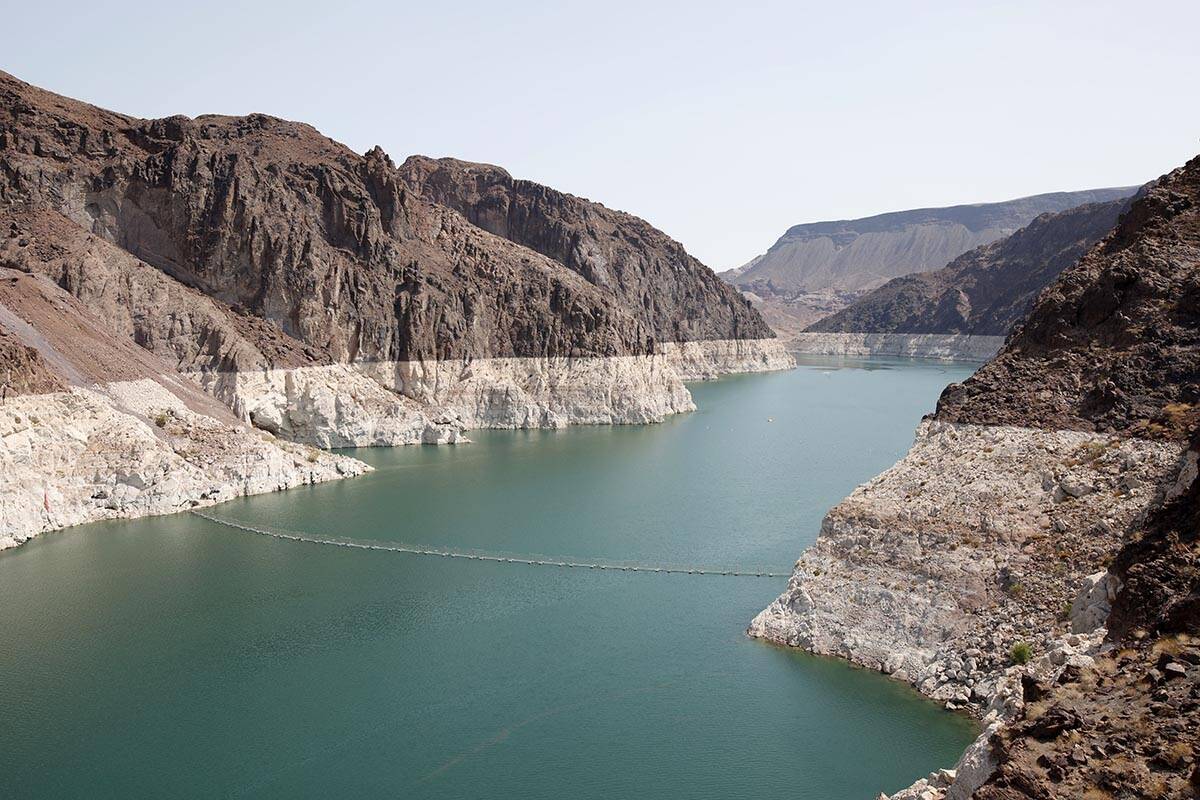VICTOR JOECKS: Las Vegas’ water situation should stress California
There’s no reason for Las Vegas to panic about falling water levels in Lake Mead. Instead, California and Arizona are the ones that should be worried.
The Colorado River Water Users Association conference starts Wednesday. Officials from Western states probably will meet to discuss reducing water allocations from the Colorado River. In all, seven states and Mexico use that water. Bureau of Reclamation Commissioner Camille Touton wants a plan to reduce water usage by 2 million to 4 million acre-feet a year.
That’s a massive amount. Normally, Las Vegas receives just 300,000 acre-feet a year. Given the ongoing drought, our allocation next year will be 275,000 acre-feet. California and Arizona receive far more. California is allotted 4.4 million acre feet. Arizona’s 2.8 million acre-foot share will drop by 592,000 acre-feet next year in response to the drought.
It would be easy to worry that Nevada is in the worst shape. It has the smallest allocation of the seven states. Lake Mead provides 90 percent of Las Vegas’ drinking water. Lake Mead’s ever-deepening bathtub ring is a stark visual reminder of the ongoing drought.
But Las Vegas has something California and Arizona don’t — access to water directly from Lake Mead. California and Arizona are entitled to much more water, but first, it has to get there. You can’t drink a piece of paper giving you water rights. If the water level in Lake Mead drops to 895 feet, Hoover Dam can’t release water downstream. That’s known as “dead pool.”
Because the water level is currently more than 1,040 feet, that may seem like only a distant problem. But Reclamation officials project that it’s possible as early as 2025 if it stays dry, water is held back at Lake Powell and states don’t modify their behavior. That’s why reductions now are so important.
While negotiations are opaque, it looks as if California is dragging its feet. The current shortage hasn’t triggered any federally ordered water cuts for it yet. It has offered to conserve just 400,000 acre-feet a year and only in exchange for federal largesse. That’s a smaller reduction than Arizona, which receives less water, is facing next year. California’s starting offer should be 1 million acre-feet annually. If it insists on a contingency, demand similarly sized reductions from Upper Basin states.
California’s reluctance is counterproductive because California and Arizona have the most to lose. If dead pool happens, Nevada and other states up river will still be able to get water, although there will be a loss of hydropower. But California and Arizona would lose access to water from the Colorado.
That’s the unfathomable crisis the Southern Nevada Water Authority has spent decades successfully working to avoid here. Las Vegas residents have made sacrifices, such as ripping up grass and paying for an intake valve into the bottom of the lake. Water recycling plays an important role in allowing Las Vegas to continue growing, too.
California officials had access to the same information Nevada had. But their state didn’t prepare. Absent an unexpected end to the drought, California’s dawdling will make things worse for itself. Las Vegas will be just fine.
Victor Joecks’ column appears in the Opinion section each Sunday, Wednesday and Friday. Contact him at vjoecks@reviewjournal.com or 702-383-4698. Follow @victorjoecks on Twitter.





























